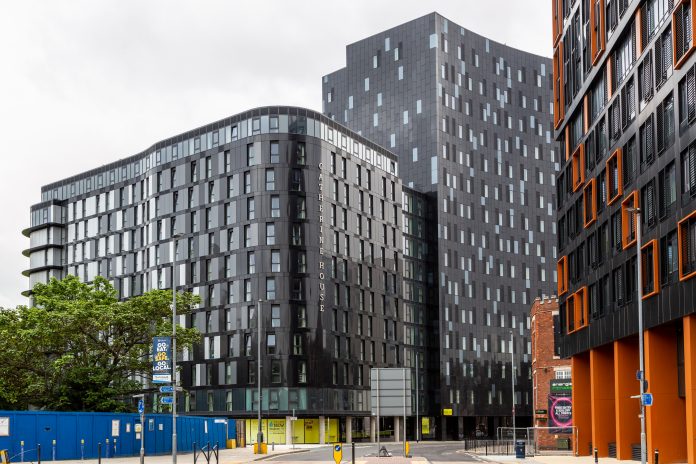Freya Turtle, director, Planning at Turley, discusses the pressing need for Government to prioritise PBSA in planning, and the economic benefits that successful implementation brings with it
The number of applications to UK universities has increased by 10% over the last decade, and the purpose-built student accommodation (PBSA) sector has needed to grow with it.
While the sector has expanded in that time, delivering more PBSA development across the UK, this growth did not come without its challenges. Significant factors have impacted the sector in recent years, with those challenges subsequently trickling down to the students they house.
COVID and Brexit altered the market remarkably
Historically, the UK has had the second-largest group of international students in the world following the United States. Figures show these students are 66% more likely to live in PBSA than domestic students, making them a huge target market for developers.
During the COVID-19 pandemic, however, travel restrictions saw the number of international students plummet. Brexit has also had a significant impact on university applications from EU students. EU students are now required to apply for student visas to study in the UK (unless exempt), and they are no longer eligible for the home-fee status, which has increased their tuition fees by more than 50% on average.
However, any concern for EU students has been rebalanced by an increased demand in non-EU student applications. Over the last four years, a steady increase in non-EU international applications has counteracted a decline in EU applications – and university applications overall are at an all-time high.
The Unipol Accommodation Costs Report 2021 estimates that 358,000 extra university places will be needed in England by 2035. To add to that, the Government’s International Education Strategy is targeting growth in international student numbers to at least 600,000 in the same year. Making sure planning policy reflects this increased demand and supports the delivery of PBSA development across the UK will be key.
PBSA planning policy is inconsistent across the UK
On a national level, Government legislation within the National Planning Policy Framework states that, to ensure the delivery of a sufficient supply of homes, the needs of groups with specific housing requirements must be addressed and be reflected in planning policies. The Planning Practice Guidance (PPG) also stipulates that local planning authorities should plan for sufficient student accommodation.
On a local level, most planning authorities now have at least some form of supplementary planning guidance or formal policy in place to inform PBSA planning applications. However, there is a clear divide in how well-versed or pro-development planning authorities around the UK really are in supporting PBSA development.
Places such as Manchester, Portsmouth, Bournemouth, Christchurch, and Poole have had a PBSA planning policy in place for years. Whereas other cities, such as Norwich, are only now getting PBSA specific planning policy in place. Even in areas where planning policy has long been in place, those policies understandably evolve over time, as local authorities adopt and review their own Local Plans or put interim guidance in place.
It is important to understand that PBSA is not a one size fits all approach. Different cities and towns have different student housing requirements and therefore the development type required is unique to each location. The result of this, however, is the planning process for PBSA development has become inconsistent and this poses risk and uncertainty for developers and operators, which can impact delivery.
Examples of key ways in which local policy can differ across geographies include approach to affordable provision; different definitions of ‘over-concentration’ in an area; allowing for direct let vs having to have a nominations agreement with a university; and different preferences for room sizes; standards and typologies.
A standardised PBSA policy would further drive sustainability and affordable housing benefits
It is clear therefore that the sector – and local authorities – would benefit from a clear and central planning policy approach for PBSA development, if we are to make the most of the benefits that PBSA developments bring to communities. For instance, the delivery of PBSA releases traditional housing stock back into the general housing market to boost the much-needed supply of homes. Elsewhere the physical and environmental regeneration that comes with PBSA development can benefit local communities hugely.
Importantly, the PBSA sector has demonstrated its commitment to net zero too. Some of the sector’s biggest developers have clearly outlined their intentions to lead the rest of the construction industry by investing in renewable energy, reducing operational energy consumption, and mitigating residual carbon.
Where clearly articulated, these economic and environmental benefits will continue to be influential in encouraging local authorities and decision-makers to put PBSA proposals into action.
The sector has proved itself to be resilient and robust in the face of volatility, having to successfully overcome the unique requirements and challenges posed by external forces such as COVID-19 and Brexit. However, without clear and adequate central planning policy or guidance, we are hamstringing the sector’s growth – and ultimately the communities PBSA development serve.














